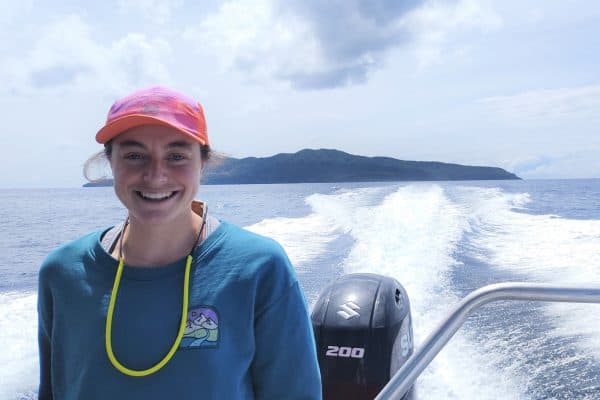Prediction of wind damage from an ex-Tropical Cyclone making direct impact with Auckland City
My name is Muizz Shah and I’m from Pakistan. I’ve been fortunate to grow up in five different countries, namely Pakistan, Indonesia, Iran, Belgium and New Zealand. The simplest way I can describe my nature is that I have an infinite number of passions which is great … but also bad at times, mainly in the form of distractions. One of my main passions is engineering and it took watching Interstellar in the theaters back in 2014 to reveal this passion. Since then, I have come to complete my BE (Hons) in Mechanical Engineering and take up my PhD. My main supervisor is Prof Richard Flay at The University of Auckland.
My project

My PhD project is on the threat that an ex-Tropical Cyclone (ex-TC) poses on Auckland City, if a direct hit occurred. Ex-TCs form as a TC deviates from its axisymmetric structure. While ex-TCs don’t have the bounded structure of a TC, they remain powerful storms capable of catastrophic damage. The strength of ex-TCs coupled with the probability of one coming in the vicinity of New Zealand every year, a real concern exists that one year an ex-TC will make landfall. Auckland being the financial capital of New Zealand and in a vulnerable region to windstorms, the concern is greater for this city than any other major city in New Zealand.
My research dives into high resolution numerical modelling using Computational Fluid Dynamics (CFD), to investigate the effect of strong winds in Auckland City. Data from NZCSM simulations, provided by NIWA, will inform the inlet conditions to my CFD models. The storms I am investigating currently are TC Cook (2017) and TC Bola (1988). CFD simulations will be validated with wind-tunnel testing on scaled models’ representative of the ones used in CFD analysis.
Thus far the project has been challenging, mainly, in optimising the CFD models. I’ve had to increase my knowledge of wind engineering a lot and learn new tools to support my technical work. Nonetheless, it has been a very enjoyable journey so far. I am determined to achieve accurate results which can benefit Crown Research Institutes, Auckland City Council as well as the actuary modelling. If I can add valuable knowledge to the RNC project with my research informing future work to the overall project, then I consider that as a success.
Next steps
With the first year of my PhD project complete, my future objectives are to conduct windtunnel testing to validate my preliminary CFD model. Furthermore, improve the accuracy of my CFD model to a point where additional analysis will require only a geometry change. There are several gaps in current research where urban areas have not been investigated in strong storm cases, therefore, I see a plethora of opportunities to model ex-TCs for various locations, connect my research findings to Riskcape.
The scope is yet undefined for the most part, however, goals for the next two years include, in addition to the CFD modelling, creating fragility curves for actuary modelling, and work with Auckland city council to develop a storm prediction and mitigation protocol. These objectives are selected to allow technical research to have a use case of creating measures against ex-TC devastation. I hope these objectives will fit well in the narrative for my thesis.




